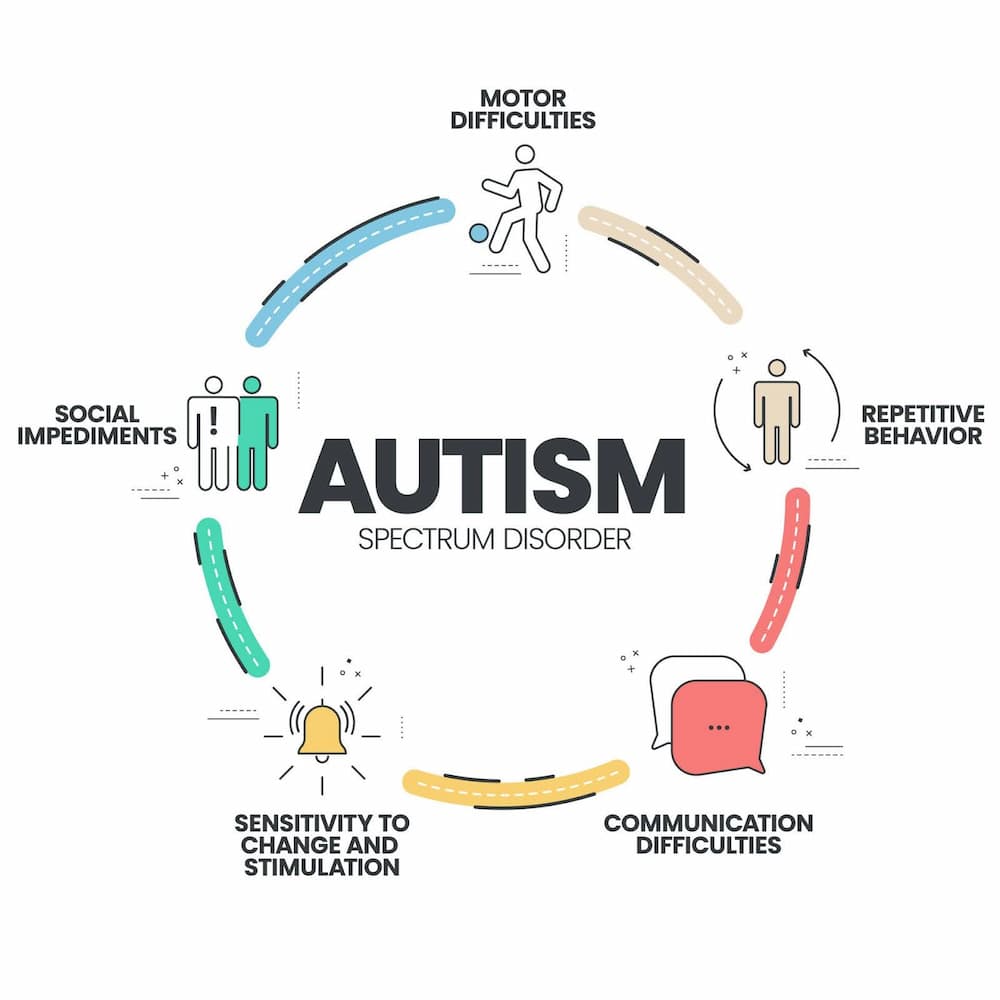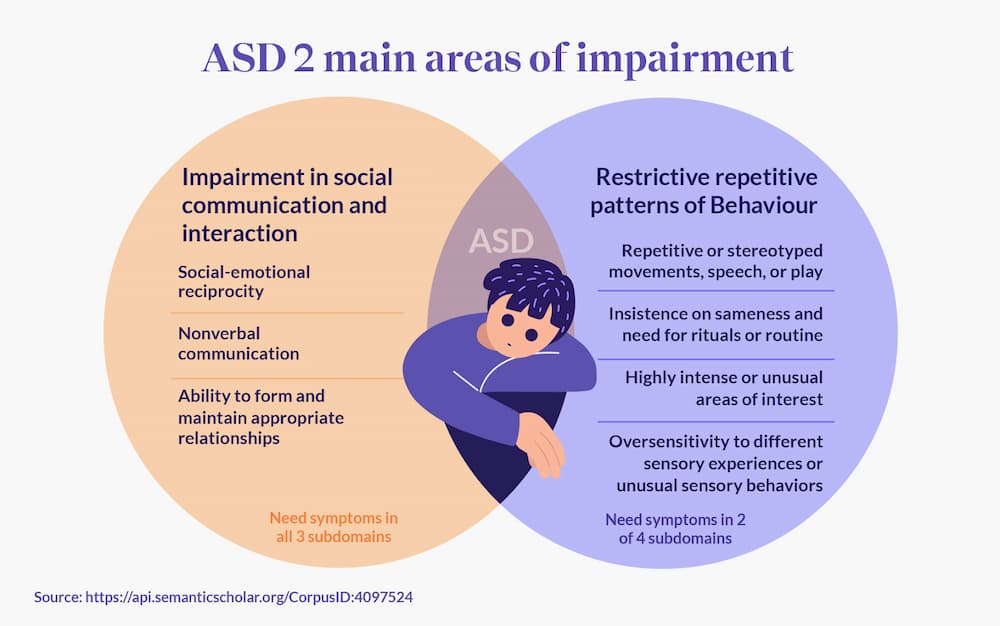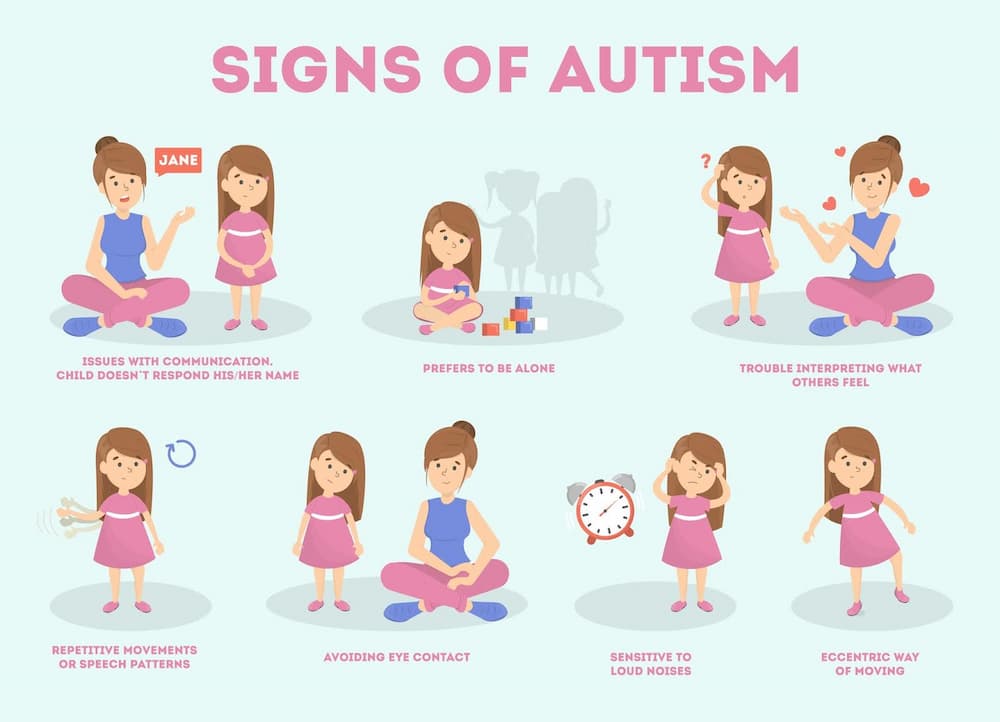Autism spectrum disorder is a neurodevelopmental condition with a prevalence rate that ranges from 0.72% to 1 in 36 children in the U.S., which is approximately 2.8%. Some of the commonly observed patterns of ASD are a combination of impairments in social and communication skills alongside restricted/ stereotypical behaviors.
The term “spectrum” refers to a wide range of disorders that the individual may experience. The exact etiology of autism is still anonymous, but researchers believe it to be a combination of environmental and genetic triggers.
Due to several complexities like developmental variability, overlapping symptoms, limited communication, and a lack of standardized tests, it is often harder to diagnose the condition until the child is 3–4 years old. However, with timely diagnosis and early interventions, ASD can be managed to a great extent.

Let’s take a look at the 3 characteristics of autism in early childhood, common impairments, and leading causes of ASD to gain a better understanding of the disorder.
Get a free online consultation
Contact us to learn more about our stem cell therapy options, what are the possible outcomes, and whether you could benefit from the procedure.

Medical Advisor, Swiss Medica doctor
What are the common signs involved?
Autism signs can vary from mild to severe, depending on the individual. No two individuals are bound to have identical characteristics of autism and severity. Some common signs and symptoms of autism include:
- Avoiding eye contact
- Repetitive behaviors, for instance, repeating words and phrases
- Obsessive interests in activities
- Delayed cognitive or learning skills
- Mood swings
- Excessive fear or lack of it
- Gastronomical issues such as constipation
ASD is known for its hallmark of social communication problems, which can take many different forms, such as verbal and nonverbal impairments. Individuals suffering from spectrum disorders often find social communication and interactions challenging due to their differences in neurodevelopment.
The main characteristics of autism are:
- Avoiding eye contact during a conversation
- Showing little to no expressions of sadness, happiness, etc.
- Showing a high level of anger and exhibiting aggressive behavior
- Struggling with language skills and understanding others
- Difficulty with nonverbal communication, such as hand gestures
Speech/ language impairments
One of the earliest characteristics of autism in 3-year-olds is speech or language impairment. The manifestation of language impairment can vary widely in severity among individuals. In most ASD individuals, this impairment can look as follows:
- Pragmatic language difficulties
- Repetitive or stereotyped language
- Delayed language development
- Repetitive or stereotyped behaviors
- Difficulty understanding abstract language
- Difficulty in establishing relationships
- Difficulty with nonverbal communication.
Restricted repetitive and stereotyped patterns of behavior, interests, and activities
ASD individuals have the unique trait of displaying restricted and repetitive behaviors or interests. For instance, specific characteristics of autism aligned with these behaviors can include:
- A specific way of doing chores or playing
- Repeating the same activities every day or following routines
- Feeling upset with a minor change in routine
- A habit of stimming via hand flapping, body rocking, etc.
- Having unusual responses to various external stimulus
Executive function impairments

Executive functioning refers to a series of cognitive processes that help an individual regulate, control, and manage their day-to-day tasks and actions. Research shows that many individuals with autism traits have executive function disorders. This disorder may include:
- Difficulty formulating plans and organizing tasks
- Trouble identifying or solving problems
- Specific memory deficits and strengths
- Short attention spans due to sensory or visual issues
- Difficulty in verbal reasoning
- Lack of cognitive impulse control leading to stimming.
Common learning characteristics
Autism spectrum disorder affects every individual differently, with varying degrees of severity and impact. While some individuals can live an independent life, others have severe disabilities and require lifelong care. Similarly, their ability to achieve developmental milestones and develop skill sets varies from person to person, depending on the severity of the condition. Some common traits of autism associated with learning are dyslexia, dysgraphia, and dyscalculia.
There are also nonverbal learning disabilities that hinder an individual’s ability to read nonverbal cues.
Additional considerations
ASD symptoms are an indication of a child’s disability to experience the world through his senses and to use his body and thoughts to respond and learn. Besides social, learning, and executive impairment, the autism characteristics checklist includes:
- Delayed movement skills
- Epilepsy or seizure disorder
- Gastronomical issues
- Anxiety, stress, and depression
- Hypo or hyperactivity to sensory input, sounds, textures, odor, and visuals.
It’s critical to understand that individuals with autism traits experience the world and their surroundings uniquely, and building on their strengths can help them navigate through life much more easily. Moreover, like any other condition, autism signs can be managed via therapies and other autism treatment options.
Signs of autism in childhood
ASD is a diverse group of conditions characterized by communication and social deficits along with atypical patterns of activities and behaviors. Traits of autism spectrum disorder can be indicated in early childhood, but due to a lack of evidence, autism is often diagnosed much later.

Researchers believe that facial features can be used as a physical marker for identifying autism. Most autistic children have specific physical features of autism, such as
- Broader upper faces
- Shorter middle faces
- Wider eyes
- Bigger mouths
- The philtrum
The signs and characteristics of autism in childhood can look like
- Lack of eye contact
- Lack of response to name by nine months
- Lack of facial expressions
- Lack of gestures by 12 months of age
- Lack of social skills and communication
- Playing with the same toys in the same order
- Flaps hands, rocks body, or spins
- Hyperactive, impulsive, or inattentive behavior
- Difficult moods and emotional reactions
- Delayed language and learning skills
- Delayed movement skills.
What causes ASD: factors involved in the onset of autism
Past and ongoing research has shown that ASD could be the result of many factors, generally genetics. None of the evidence supports the idea that autism is connected to different diseases or vaccines. Autism affects all ethnicities and socioeconomic groups. Moreover, autism is a spectrum disorder, which explains why the severity and symptoms can vary from person to person.
Some of the main causes of ASD onset include:
- Gender prevalence, i.e., boys are four times more likely to develop ASD than girls
- Genetic; families with an autism history are more likely to be at risk of developing ASD
- Older parents are more likely to give birth to children with developmental disabilities
- Bacterial and viral infections
Conclusion
Autism spectrum disorder is a neurodevelopmental disorder with early signs of social and communication disabilities. Research suggests genetics and the environment are the main culprits behind the onset of the disease. However, early diagnosis and interventions specifically curated for the individual can play a critical role in developing skills to overcome these limitations.
Contact us
Get a free online consultation to learn about the expected results of stem cell therapy for your case, what is the cost of the treatment, and its duration.

MD, Endocrinologist, Pediatrician, regenerative medicine specialist, R&D director
List of References:
Signs & Symptoms | Autism Spectrum Disorder (ASD) | NCBDDD | CDC. (2023, January 11). Centers for Disease Control and Prevention. Available from: https://www.cdc.gov/ncbddd/autism/signs.html. (Accessed 28.03.24)
Lord C, Elsabbagh M, Baird G, Veenstra-Vanderweele J. Autism spectrum disorder. Lancet. 2018 Aug 11;392(10146):508-520. doi: 10.1016/S0140-6736(18)31129-2. Epub 2018 Aug 2. PMID: 30078460; PMCID: PMC7398158.
Talantseva OI, Romanova RS, Shurdova EM, Dolgorukova TA, Sologub PS, Titova OS, Kleeva DF, Grigorenko EL. The global prevalence of autism spectrum disorder: A three-level meta-analysis. Front Psychiatry. 2023 Feb 9;14:1071181. doi: 10.3389/fpsyt.2023.1071181. PMID: 36846240; PMCID: PMC9947250.
Autism statistics and facts. Autism speaks. Available from: https://www.autismspeaks.org/autism-statistics-asd. (Accessed 28.03.24)
Bennie, M. (2020, April 21). Executive function: what is it, and how do we support it in those with autism? Part I – Autism Awareness. Autism Awareness. Available from: https://autismawarenesscentre.com/executive-function-what-is-it-and-how-do-we-support-it-in-those-with-autism-part-i/. (Accessed 28.03.24)
Hodges H, Fealko C, Soares N. Autism spectrum disorder: definition, epidemiology, causes, and clinical evaluation. Transl Pediatr. 2020 Feb;9(Suppl 1):S55-S65. doi: 10.21037/tp.2019.09.09. PMID: 32206584; PMCID: PMC7082249.
Causes of autism | Autism Awareness Australia. (n.d.). Available from: https://www.autismawareness.com.au/understanding-autism/causes. (Accessed 28.03.24)
MD, Physician in General Medicine, Gastroenterology, Rheumatology, Pulmonology, Cardiology. Regenerative specialist






